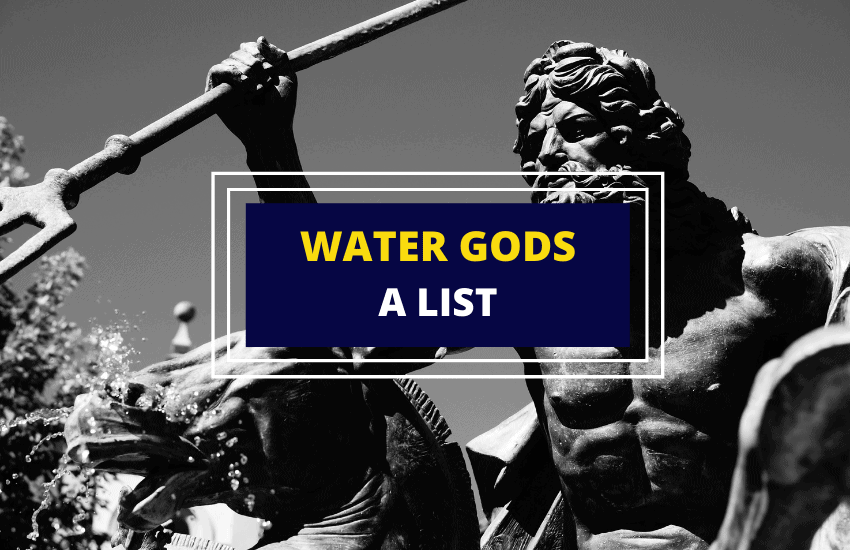
Table of Contents
Many cultures feature water gods as part of their folklore and mythology. Most ancient civilizations were polytheistic, which meant that people worshiped many gods and goddesses. Some cultures adapted the gods of their neighbors and predecessors, changing these to reflect their own set of values and beliefs. For instance, the Roman god Neptune is the equivalent of Poseidon, the Greek god of the sea. Because of such borrowings, there are many similarities among the water gods of different mythologies.
Water gods are the deities who had the powers to control the element of water and ruled over different water bodies such as oceans, rivers, and lakes. Here, we have rounded up some of the most prominent water gods.
Poseidon
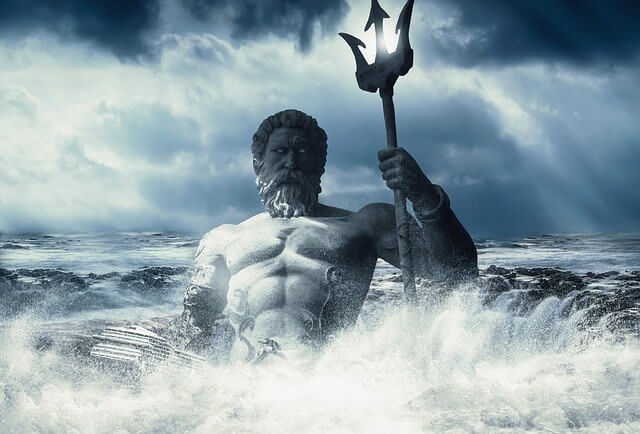
In ancient Greek religion, Poseidon was the god of the sea, earthquakes, and horses. His name means lord of the earth or husband of the earth. In Greek mythology, he’s the son of the Titan Cronus and Rhea, and the brother of Zeus, the god of thunder, and Hades, the god of the underworld. He’s commonly depicted with his trident, a powerful weapon which could create earthquakes, storms, and tsunamis.
Cults of Poseidon can be traced back to the late Bronze Age and Mycenaean civilization. He was revered in the Isthmus of Corinth and was the focus of Panhellenic Isthmian games. In Homer’s Iliad, he’s a major protagonist in the Trojan War, but a nemesis of Odysseus in Odyssey. Mythologies often depict him as a temperamental god, who punishes those who angered him with storms and shipwrecks.
Oceanus
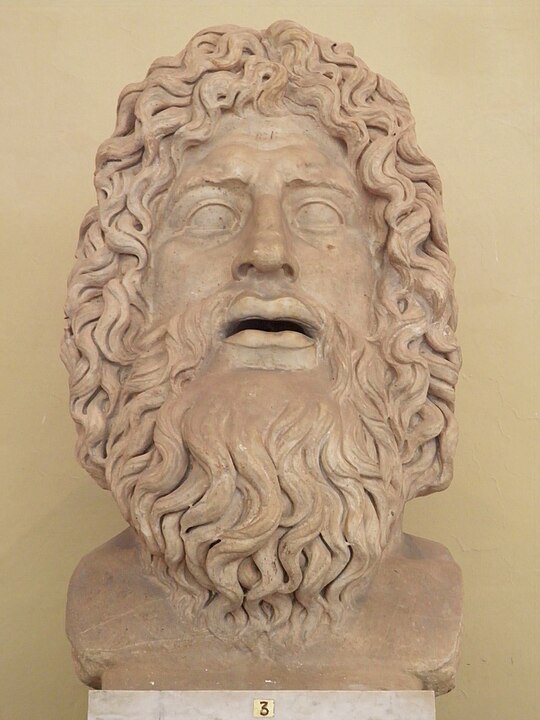
In Greek mythology, the Titans were the old generation of gods that reigned before the twelve Olympian gods, and Oceanus was the personification of the sea, which encircled the world. In Hesiod’s Theogony, he’s mentioned as the eldest Titan, the son of Uranus and Gaea, and the father of all ocean and river gods. He’s commonly depicted as a half-man, half-serpent with bullhorns, and was one of the most peaceful of all the gods.
However, Oceanus was never worshipped like other water gods. After the War of the Titans, known as the Titanomachy, Poseidon became the supreme ruler of the waters. Still, Oceanus was allowed to continue ruling the Atlantic and Indian Oceans, or the kingdom beyond the Pillars of Heracles. He’s even regarded as the regulator of heavenly bodies since the skies rise and end in the realm of his kingdom. Representations of him have been found on imperial coins of Tyre and Alexandria.
Neptune
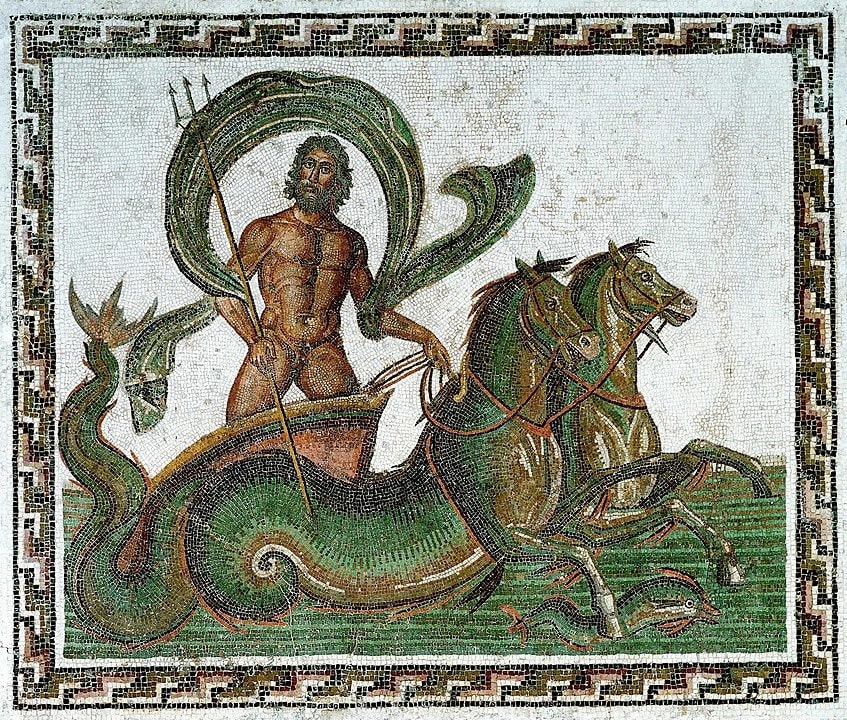
The Roman counterpart of the Greek god Poseidon, Neptune was the god of the seas, springs, and waterways. His name is thought to be derived from the Indo-European term for moist. He’s commonly depicted as a bearded man accompanied by dolphins, or being pulled in a chariot by two hippocampi.
Neptune was originally the god of fresh water, but by 399 BCE he became associated with the Greek Poseidon as the god of the sea. However, Neptune wasn’t as significant a god to the Romans as Poseidon was to the Greeks. He had only two temples in Rome, the Circus Flaminius, and the Basilica Neptuni in the Campus Martius.
Llyr
In Celtic mythology, Llyr is the god of the sea and the leader of one of two warring families of gods. In Irish tradition, his name is commonly spelled as Lir, and Llyr in Welsh, and translates to the sea. An ancient Irish deity, Llyr appears in few Irish myths like the Children of Lir, but little is known about him and he is not as popular as his children.
Njǫrd
Njǫrd is the Norse god of the sea and of the wind, and the father of Freyr and Freyja. In Norse mythology, there are two different tribes of gods and goddesses—the Aesir and the Vanir. As a Vanir god, Njǫrd is generally associated with fertility, wealth, and commerce.
Njǫrd was the god invoked by sailors and fishermen. Some scholars believe that he might be evidence of a Germanic religion introduced to Scandinavia. Several traditions even hold that he was a divine ruler of Sweden, and many temples and shrines were built for him.
Aegir
The personification of the power of the ocean, Aegir was a primeval god in the Norse pantheon, known for the lavish entertainment he gave to the other gods. His name is associated with the Old Gothic word ahwa which means water. In Skáldskaparmál, he’s called as Hlér that means sea. The Norse people were seafarers and believed that shipwrecks were caused by the god. Therefore, they feared him and offered sacrifices to please him.
Sebek
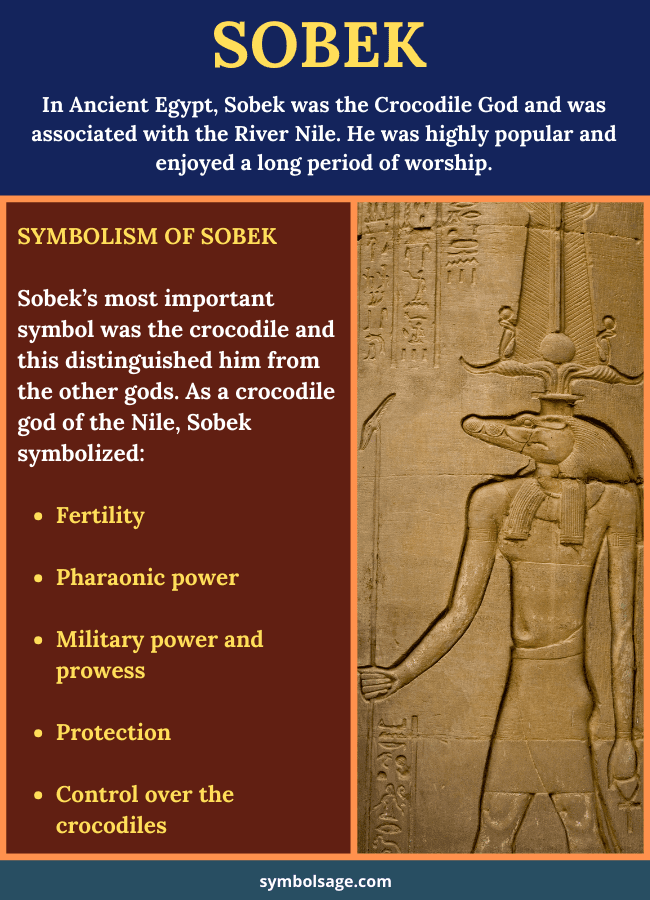
In ancient Egypt, Sobek was the god of water, and the lord of wetlands and marshes. His name means crocodile, so it’s no wonder that he’s commonly depicted either as a man with a crocodile’s head, or entirely in the form of a crocodile.
Sobek was most popular during the Old Kingdom, around 2613 to 2181 BCE, but later merged with Ra, the sun god, and became known as Sobek-Re. During his time, crocodiles were deemed sacred and even mummified. The worship of Sobek continued up to the Ptolemaic and Roman times in Faiyum, Egypt.
Nu
The most ancient of the Egyptian gods, Nu was the personification of the dark watery abyss that existed at the beginning of time. His name means primeval waters, and the water of chaos he represented contained the potential for all life. In the Book of the Dead, he’s referred to as the father of the gods. However, he wasn’t worshipped and had no temples dedicated to him, as he was thought to live within the bodies of water and outside the universe.
Enki
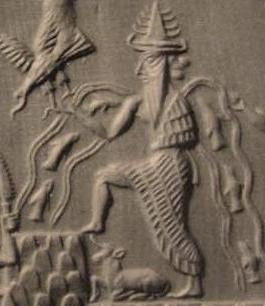
In Sumerian mythology, Enki was the god of fresh water, wisdom and magic. Before his cult spread throughout Mesopotamia, he was the patron god in Eridu during the Early Dynastic Period, around 2600 to 2350 BCE. By 2400 BCE, the Mesopotamian god became known as Ea in Akkadian. The ritual cleansing waters of the time was even called Ea’s water.
Enki was commonly depicted as a bearded man wearing a horned cap and long robe. As a water god, he’s sometimes shown with streams of water flowing over his shoulders to the ground. In the Enuma Elish, the Babylonian epic of creation, he’s portrayed as the father of Marduk, the national god of Babylon. He also appears in the The Epic of Gilgamesh, and other works like The Atrahasis and Enki and the World Order.
Varuna
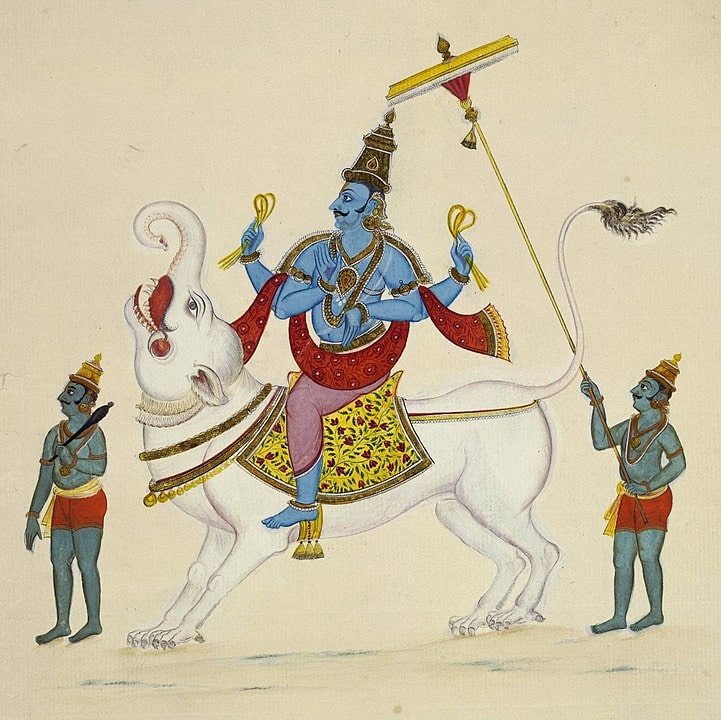
In Hinduism, Varuna is the god of sky and waters. However, early texts, especially the Rigveda, refer to him as the god-sovereign and the upholder of cosmic and moral law. In later Vedic literature, he plays a lesser role and became associated with the celestial waters, oceans, rivers, streams, and lakes. Like most other water gods, he also dwelt in an underwater palace.
Anahita
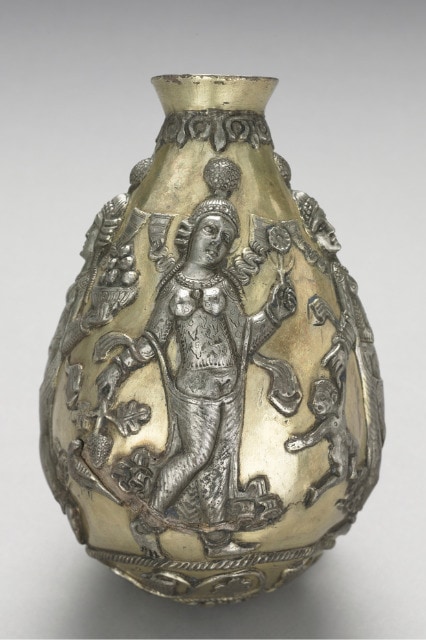
The ancient Persian goddess of water, fertility, health, and healing, Anahita was invoked by soldiers for their survival and victory in battle. In the Avesta, she’s referred to as Ardvi Sura Anahita that translates as Damp, Strong, Untainted. She was widely worshipped during the 8th century BCE, and had several temples and shrines dedicated to her. Even after Zoroastrianism established monotheistic worship in the region, people still worshipped her until the fall of the Sassanian Empire in 651 CE.
Gonggong
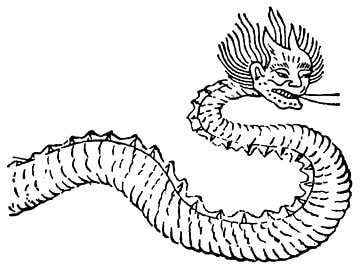
In Chinese culture, Gonggong is the water god who bumped into Mount Buzhou and caused a flood disaster. He’s often depicted as a black dragon with a human face, and appears in the writings of the Warring States era. In the stories about him, his anger and vanity caused chaos, especially the war between him and Zhurong, the god of fire. In Huainanzi, he’s linked with the mythical emperors of ancient China, such as Yu the Great and Shun.
Ryujin
The sea god and master of serpents in Japanese mythology, Ryujin is regarded as the bringer of rain and storms. He’s also associated with another water deity named Watatsumi. He was thought to appear in people’s dreams, and in the moments of waking up. In several myths, he’s portrayed as a protagonist, a kind ruler, or even an evil force.
Tangaroa
In Polynesian and Maori mythology, Tangaroa is the god of the ocean and the personification of all fish. In some regions, he’s known as Tangaloa and Kanaloa. As the controller of the tides, he was invoked by Maori people, especially fishermen and seafarers. However, his role varied as he was often fused with family or local deities. In the Samoan Islands, he was regarded as the chief god and creator of the world.
Tlaloc
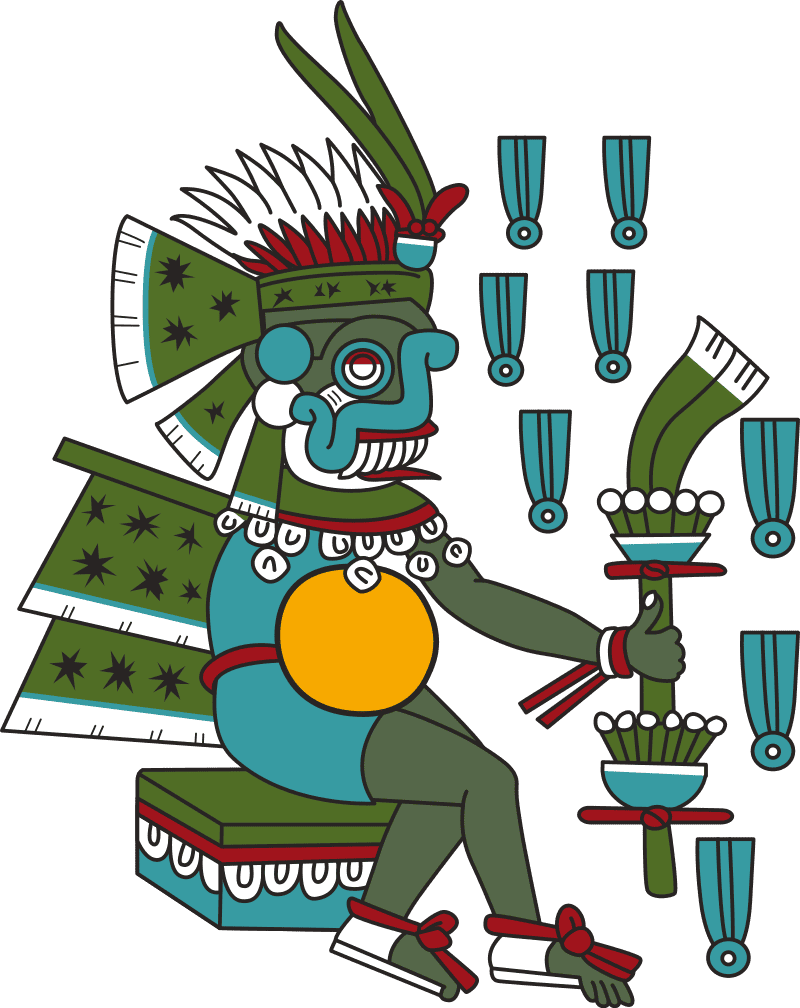
The Aztec god of the waters, rain and lightning, Tlaloc was widely worshipped throughout Mexico around the 14th to 16th centuries. His name comes from the Nahuatl words tlali and oc that means earth and something on the surface respectively. When depicted in murals, he resembles a jaguar, wearing a mask with bulging eyes and long fangs.
Tlaloc’s companion was Chalchiuhtlicue, the goddess of rivers, lakes, and fresh waters. He was the ruler of the mountain gods associated with water, and dwelt at the Tlalocan, the otherworldly paradise of the dead victims of storms and floods. He was also feared because he could bring rain, unleash hurricanes, and even provoke drought. Worship of Tlaloc included feasts, fasting, and human sacrifices.
Wrapping Up
Water plays a central role in many religions and cultures around the world. There are many gods associated with the sea and with natural phenomena such as great floods and tsunamis. Today, we appreciate the mythology built around these water gods as insights into what life was like over thousand years for the ancient civilizations.








